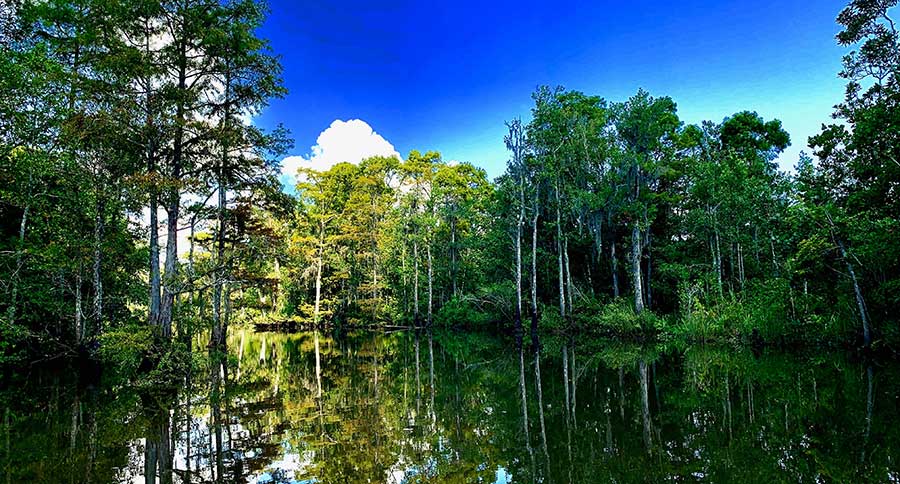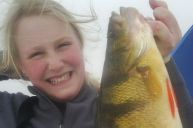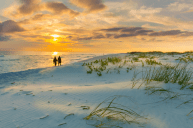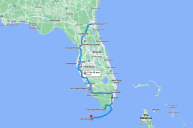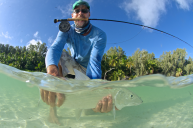Take it from someone who experienced almost all of it in one trip: Coastal Mississippi is a great destination for outdoorsmen and their families.
Images and additional footage via Coastal Mississippi
On a recent trip to Coastal Mississippi, myself and Associate Editor David Schlake embarked on a trip that was markedly different from anything we'd been on before.
That was a good thing, as it turns out the Secret Coast is among the lesser-known hidden gems of America, and an essential cultural connection to much of what makes the Gulf Coast so great.
We knew it would involve some fishing, which Schlake and I are always up for, but beyond that we didn't have much of an idea of what we were getting ourselves into.
Now that I have a better idea of what the the area's all about, I know I'll be back. I almost don't want to tell too many people about it (you know, leaking the secret and all).
But, keeping stuff like this to yourself is never as fun as sharing it.
The Full Itinerary
Our host and guide for our trip, Coastal Mississippi's Anna Roy, sent along a plan of attack prior to us leaving. Some fishing was high on our list, and it was checked off immediately. A boat tour on the Pascagoula River, multiple stops at incredible museums, meals at local places right up our alley, and a couple nights in the old stomping grounds of Elvis himself... How in the world is all this going to be crammed into one week, in one small region of the Gulf Coast?
Staggeringly, it all happened smoothly, didn't take long to drive between, and was capped off with a stop at the spectacular Marine Education Center at the University of Southern Mississippi. Fishing in Pass Christian Harbor, eating po' boys in Pascagoula, a shrimp boat trip in Biloxi...
Everything was on or near the water, with a strong seafood industry and influence, and we would be experiencing a ton in five days.
Still joking about the packed schedule, we boarded our direct Sun Country flight from Austin and took off on a kind of trip we knew we wouldn't be familiar with, but were ready to enjoy.
Lasting Impressions
After landing at the Gulfport-Biloxi Airport, we took the short trip to lunch at The Blind Tiger and our first meeting with Anna. We went through intros, enjoyed a good seaside meal, and got our first taste of the Secret Coast.
Then we stopped at the Maritime and Seafood Industry Museum, which gave us an interesting angle on the importance of the region. Boat styles were virtually invented in the Mississippi Gulf Coast, a ton of shrimp and other seafood get their market start here, and the history is rich with saltwater-influenced culture.
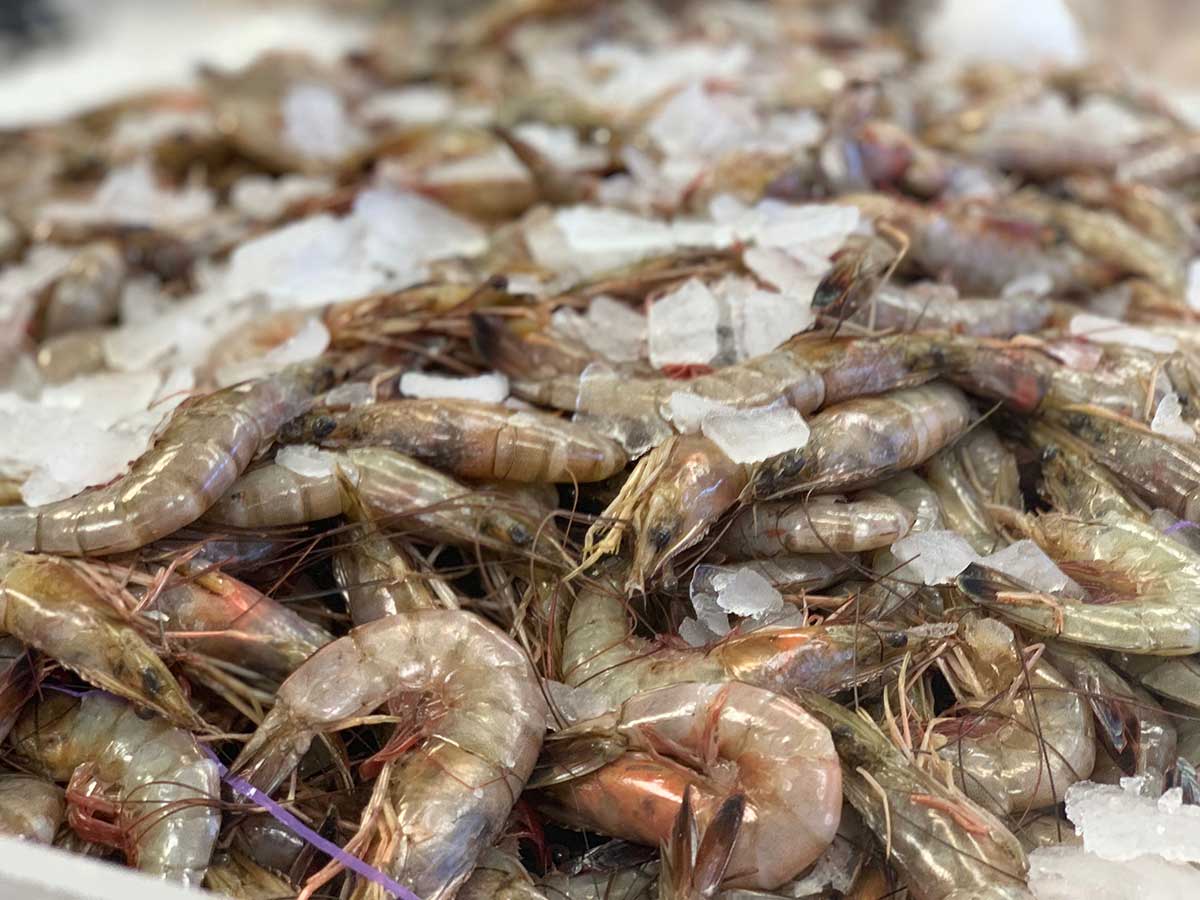
We checked into the Hotel Pass Christian, a stellar spot near the fishing pier, and settled in before our fishing excursion the next day. David's covered that trip, a unique one to say the least, and I highly suggest reading his perspective on the story.
The next day included a stop at the excellent Bright Eyed Brew, then saw us on a boat once again, this time a working shrimp boat that's regularly used for tours. It was a cool way to give folks like us the closest look we've ever had at the ins and outs of netting the tasty little crustaceans.
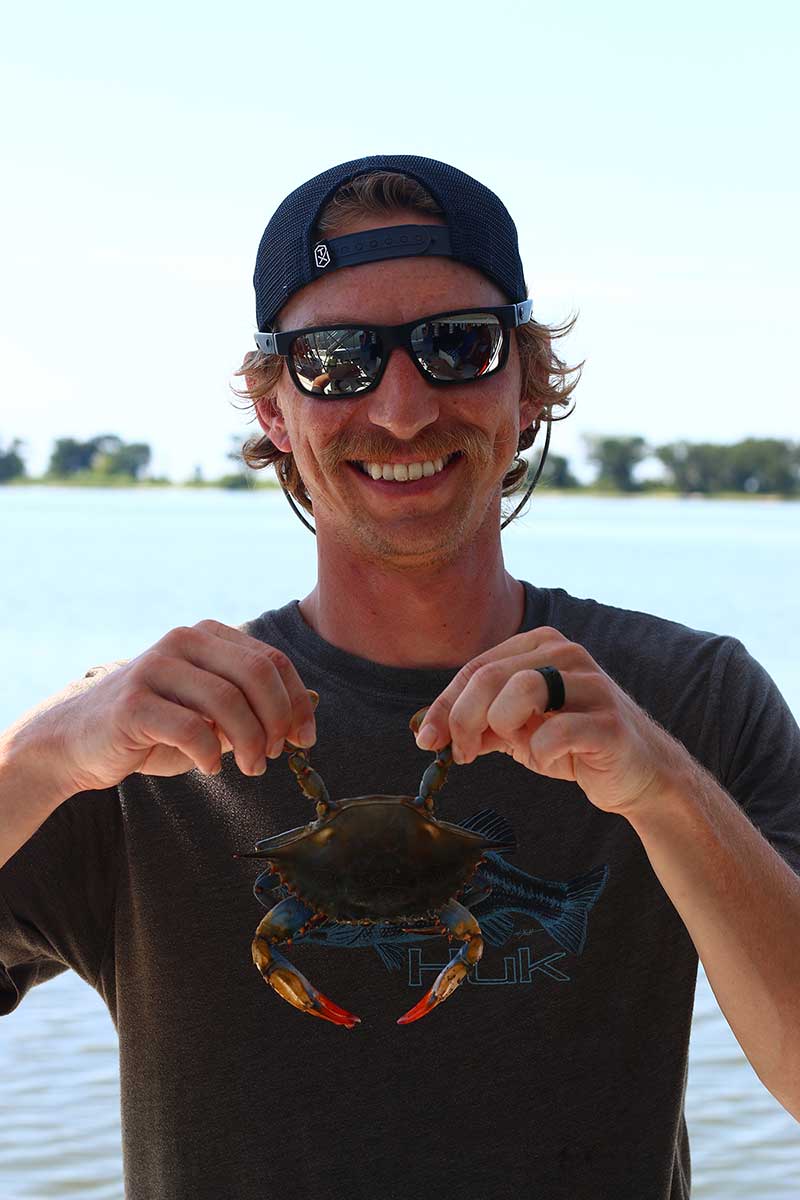
Our guides were excellent, and only complemented by their loyal Labrador retriever who delivered drinks with the koozie pouches sewn onto his dog vest.
It was a symbol of the overall laid back attitude this beach area had adopted.
We were all for it.
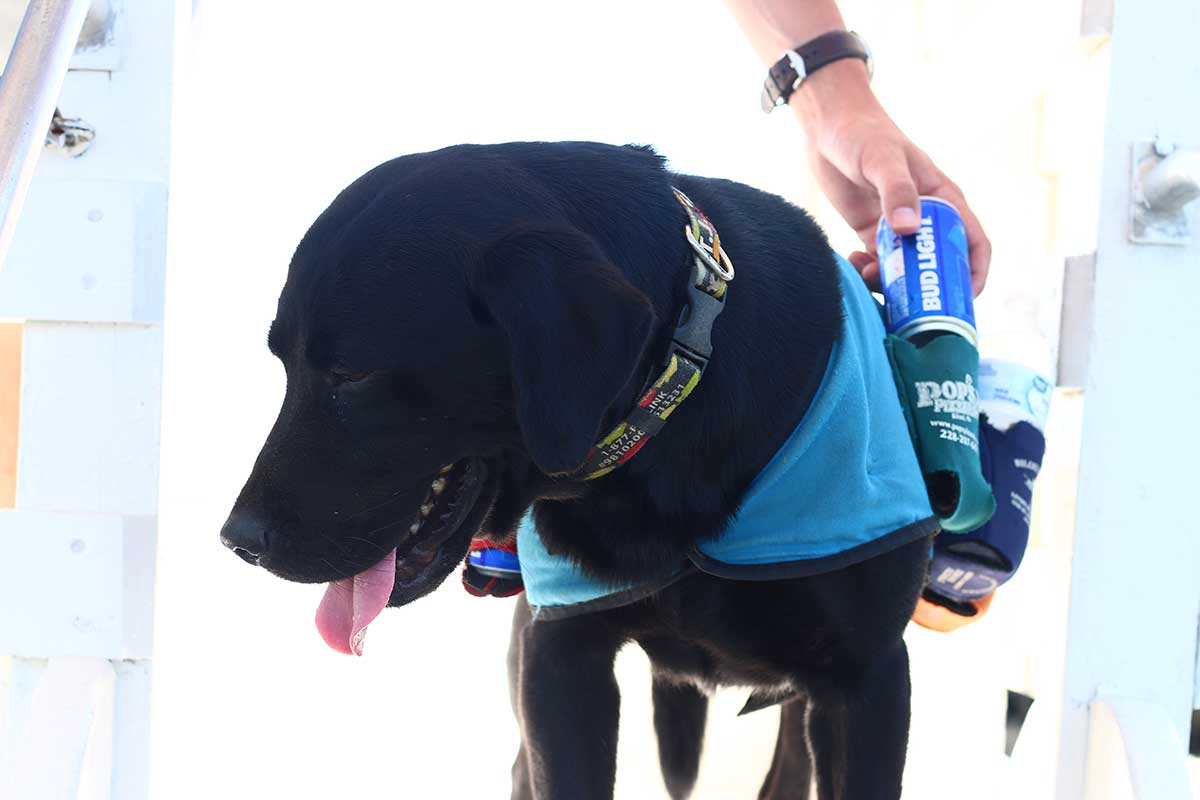
We followed that fun and educational experience with a trip to Maison de Lu in Ocean Springs, and then the Walter Anderson Museum of Art, taking a glimpse into an artist I never knew about, and have come to really appreciate.
Anderson was a little troubled mentally, but devoted a good portion of his life to experiencing the wilderness of the Gulf Coast and translating it into his art. He had a small row boat, which now hangs from the ceiling of the museum, and he would take the long trip to the barrier islands.
https://www.instagram.com/p/BwBKNVnFah5/
He was even known to have tied himself to a tree during an oncoming hurricane, just to fully experience what it was like to survive such a storm.
His art is not only framed canvas, but includes murals and carvings, ceramics and block prints. He covered the walls of what was formerly the Ocean Springs Community Center with a colorful depiction of the history of the city, the wild flora and fauna that make it so great, and the parts of it that he that were worth sharing through his painting.
https://www.instagram.com/p/B0hWGwnHlLW/
Elvis' Old Stomping Grounds
Later that night we checked into the Gulf Hills Hotel, a totally different experience from our first two nights, but amazing just the same.
Gulf Hills, an aging-but-still-has-character type of place, was once known as the Dude Ranch, and was the place Elvis hung out when he spent time in the area. The top floor of the main hotel building is devoted to the "Love Me Tender, Love Me Suite," and is full of nostalgic memorabilia without being too hokey. It's Elvis after all, and who isn't a fan of Elvis?!
I took the obligatory dip in the pool, just so I could say I swam in the same pool as Elvis.
The following day might have been the highlight, and not just because it started at the famous TatoNut Donut Shop. David and Theresa Mohler have turned a modest shop with a specialized potato flour-based donut recipe into an iconic Gulf Coast establishment.
Their perseverance in the face of Hurricane Katrina, opening up shortly after to help get the locals anything to eat and take their mind off things, inspired the Katrina Pieces on their menu. They're the scraps of dough produced after cutting it to make glazed twists, and instead of tossing it, they fried them up to feed the long lines. They became menu item and the tradition stuck.
Next we joined up with Captain Benny McCoy at the Pascagoula River Audubon Center for a genuine swamp tour, and got more out of that float than ever expected.
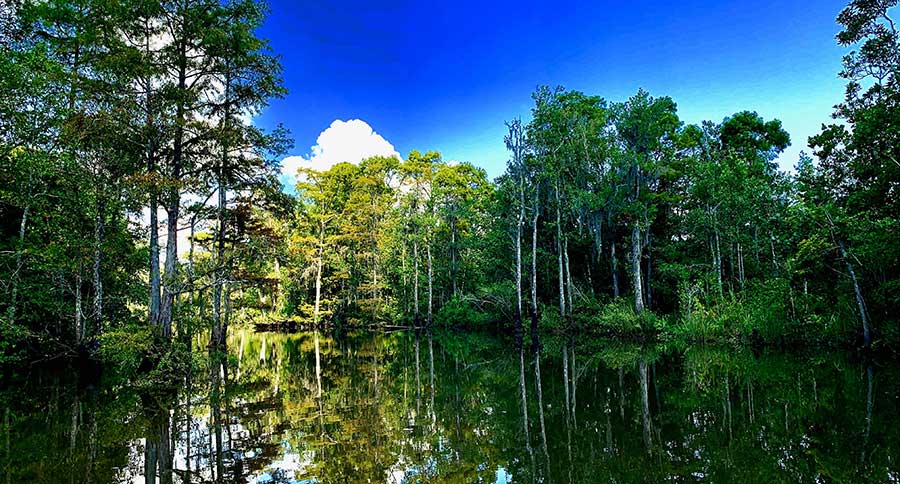
Captain Benny was a virtual encyclopedia of knowledge, sharing all he knew about the diverse plants and animals that called the river home. He pointed out the tiny crabs trying to attract mates, the female turtle tending to its nest, the ospreys soaring overhead, and even knew where an alligator had laid her eggs, assuring both David and I a glimpse of the gigantic reptile. David had never seen one before, and was pretty pumped.
As great as the swamp tour was, we were surprised after lunch at the amazing Bozo's Seafood Market and Deli (ignore everything else and get a po' boy) with a trip to the Gulf Coast Gator Ranch. We hopped in an airboat, watched our guide entice some wild gators with marshmallows, and then got to feed some of the prehistoric monsters ourselves (over a chain link fence, of course).
As fun as it was, we couldn't help but imagine what an alligator hunting trip in this region might look like. We made plans to revisit that question, but at the time were happy to be hanging out so close to them.
Then, in one of the best photo ops of the trip, we got to get up close and personal with a juvenile gator.
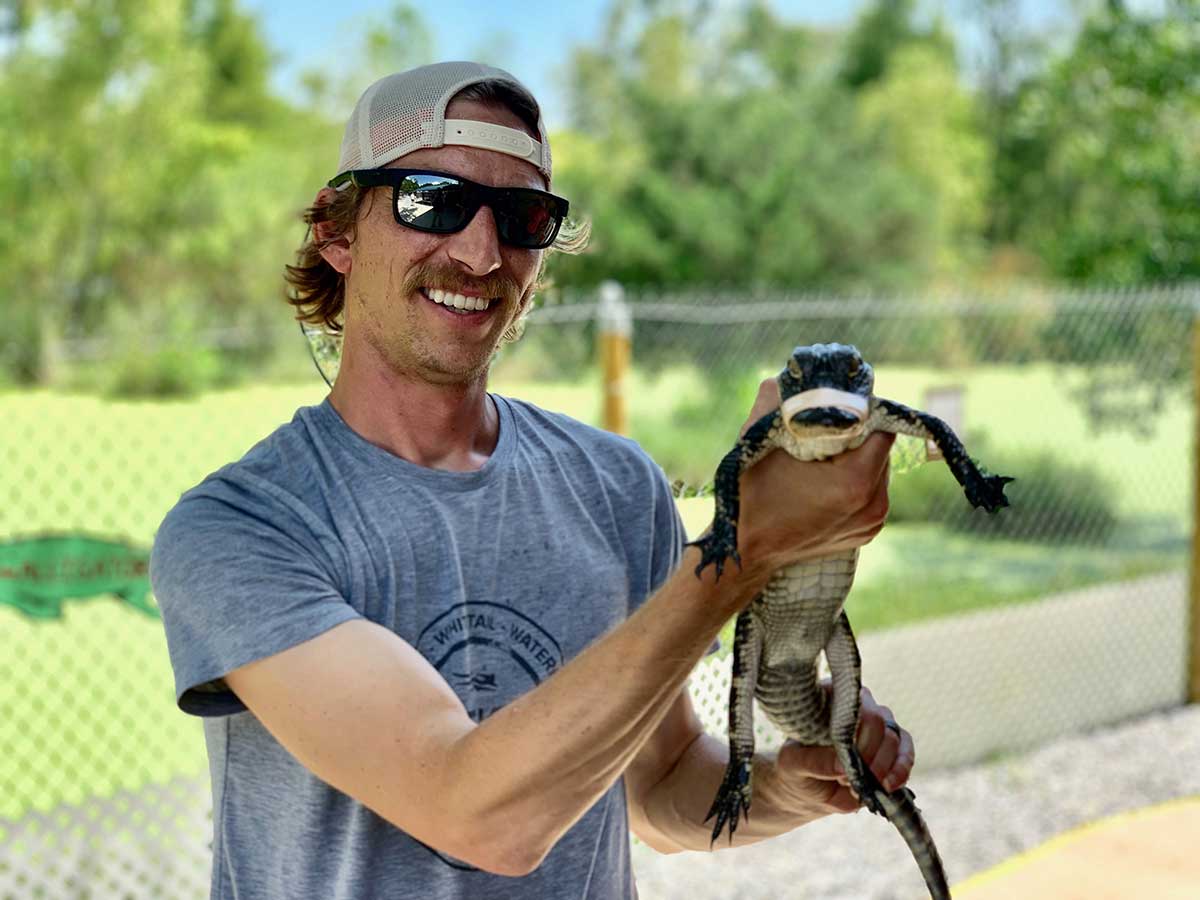
The folks at the Gator Ranch were top notch, and the smiles on our faces wouldn't leave for a good while.
The Meal That Capped It Off
That night, we were scheduled to meet Anna at White Pillars, a historic beachside mansion that had been flipped into an exceptional restaurant, ran by head chef and owner Austin Sumrall. Needless to say, this was the best meal of the trip, and might creep into the top few meals I've ever eaten in my life.
https://www.instagram.com/p/BxTZHcmFtSA/
A seafood tower, everything fresh from the Gulf, started things off, and the bone marrow burger was meltingly good. Sumrall joined us to help explain things, and instantly came across as a genuine guy who cares about what's going through his kitchen. He forages, fishes, and hunts when he has the time, and has made a name for himself with White Pillars as his headquarters.
He told us the entire menu was based on what was fresh, local, and available to him, with an ever-changing turntable of flavors and presentations that would be the envy of any bigger-city five-star.
https://www.instagram.com/p/B0qdJy1n7b7/
Everything, down to the banana pudding/ice cream concoction we had for dessert, was delicious. If I can convince you of anything, it's this: don't go to Coastal Mississippi without taking in a meal at White Pillars.
The next day was our last, but we still had time to check out the incredible Marine Education Center at Gulf Coast Research Laboratory in between meals at the Greenhouse on Porter and Desportes and Sons Seafood Market. The restaurants were awesome (you can't go wrong with biscuits for breakfast and a seafood platter for lunch in Mississippi!), but what really stuck with me was the Marine Education Center.
Maybe it's because I'm an architecture geek, or because my kids would have loved joining the youth programs offered there, the Marine Education Center made an impression. Our guide explained to us how the entirety of the grounds were built to withstand coastal storms, but also exist seamlessly with the natural contours of the earth and avoid interrupting wildlife growth or movement.
Classrooms were raised to allow turtles to crawl underneath, strong windows were prioritized, and the spectacular bridge joining two sections of the grounds was build with a minimalist footprint and impact on the environment. It was really something you have to see to appreciate.
Best of all, it was a place where kids come for camps and classes, learning to catch and identify fish, navigate boats, and be true stewards of the land.
It encompassed something thematic from the whole trip. The people and places here in Coastal Mississippi have lived through a lot. It's a coexistence of cultures, some familiar and some surprising, and lets everyone and everything vibe so well together. No one gives the side eye to tourists, and the thick, salty air starts to grow on you after a couple days.
All in all, our trip to the Secret Coast gave us all the required things: a new appreciation for a previously unvisited spot; historical and cultural perspective on how much the Gulf Coast means to this region; friendly, memorable people that made us feel welcome; and great stories to remember and tell.
There's not a whole lot more you could ask for in a trip.
NEXT: ALPACKA IT IN: 20 MILES OF MINNESOTA'S BOUNDARY WATERS IN A PACKRAFT
